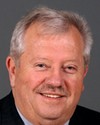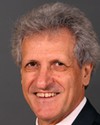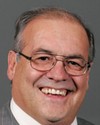Thank you.
I'd like to thank the committee for the invitation to speak here today.
I'll be making my presentation in English only, but I will be able to answer questions in French.
I have two serious concerns about the Canadian aviation security system that have nothing to do with the good work done on the front lines.
I want to be as clear as possible on my four initial take-home points.
First, aviation security is a matter of public security. The public must be engaged in an honest, frank discussion of the risks, responsibilities, and uncertainties of aviation security. To my mind, it is simply unacceptable that we have a large sphere of public policy that we cannot discuss openly.
Second, I see no compelling evidence that risk management is the appropriate model for managing aviation security. I'll return to this, but it is crucial to say that aviation safety and aviation security are fundamentally different objects and they require different manners of management. Safety is an area in which one can accumulate knowledge and therefore make risk judgments. If a bolt fails 800 times, we may assume that it will fail the 801st. However, aviation security, because it is driven by individuals, is fundamentally different. Because 800 people have passed through a security checkpoint securely is absolutely no indication that the 801st person will be secure. Ironically, then, the more we know about aviation security, the more wrong we are.
Third, because of this underlying uncertainty, safety management systems and security management systems are fundamentally different. I want to highlight the managerial structure that places CATSA, in particular, in an impossible position. Transport Canada has defined a regulatory structure that is prescriptive, yet best practice and Treasury Board Secretariat rules about risk management require CATSA to be flexible. So CATSA is stuck in between the best international practices and the prescriptive regulations of Transport Canada. To me, this should be one of the key grounds of discussion.
Finally, I think profiling is a dangerous path to go down. Profiling by nationality, origin, race, ethnicity, and language are all incredibly misleading.
There are a number of questions, and I want to do my best to respond to them in a succinct way.
First of all, the threat is not simply to the Canadian aviation sector. Rather, it is to Canadian society. The way we protect the Canadian aviation sector must reflect the broader needs and requirements of Canadian society. It seems essential to me that the way we police aviation reflects the values that Canada represents. It seems to me that we need to be very careful about, for example, going down the profiling path.
Second, with all respect to my colleague, Mr. Sela, from Israel, I would argue that it is incredibly dangerous to follow the path of the Israeli security system as the gold model for international aviation security. I understand that this is the discourse within the majority of public discussions about aviation security. But I think the Israeli situation--geopolitically, legally, and strategically--in terms of risk and threat, is so fundamentally different from what it is in Canada that we really go a step too far if we adopt or even seek to adopt the Israeli model. I'm sure Mr. Sela and I can have a frank and robust conversation about that in the next two hours.
To give a clear example, we all know that we may be burglarized or assaulted in our homes, and yet we invest in police forces, and perhaps we invest in locks for our doors. We do not put down razor wire and land mines. That's because we have a different understanding of what the risk is to our homes and to us than what it is to the country or to the border between North Korea and South Korea. If we are to understand what measures to take, we have to understand what the risk is, in particular to Canada.
Third, I'm increasingly concerned about the American tail wagging the Canadian aviation security dog, if that isn't stretching the metaphor too far. At the moment it appears—and I say “it appears” because there is not transparent information about this available to the public—that American security requirements are changing what screening gets done at Canadian airports. This is not just in pre-clearance areas, but those are the spaces where it's most visible. The American government requires that extra screening be done on passengers to the United States.
My question is how is that being done? I simply don't know. I'm a serious person. It's not because I'm lazy. It's not because I haven't been asking questions. We simply don't know what the rules are. We don't know what the rules are about the degree to which American regulations are pushing Canadian security.
Finally, one of the key questions, to me, is how secure is our aviation security system?
I want to make two points. The first is that, in one sense, it's unknowable. It's unknowable because we don't know what the next threat is. Again, this is not because of anything in the process or in our intelligence agencies; it's simply that the aviation security system is a deeply uncertain one.
We can make broad generalities about highway traffic safety and say there will be 3,000 people killed on Canadian roads over the next year, but we can't say which accident will happen or which accident will be fatal. We can only draw large rules to say that this is the speed limit, or this is what we do with traffic lights.
In the same way, we do not know--and I would say in some way we can't know--how secure our aviation security system is because there's no way of putting those high-impact, low-frequency events into any kind of model. There's just not enough data that lets us say Canada has a 90% security rate, whereas Israel has 99%, whereas Burkina Faso has 95%. So we have to operate within this atmosphere of uncertainty, which means looking for incremental improvement rather than some kind of metric or number.
In particular, the millimetre wave scanners represent a genuine leap forward in aviation security screening technology. There is no question that they detect not only the current threats that we face better in terms of liquid explosives and in terms of prohibited items, but they go after the next generation of threats much better also—that is, for example, ceramic knives or other kinds of devices that are not seen by the current metal detector archway. The millimetre wave scanning is, without a doubt, not magic, but a much better mousetrap. So I think they should be rolled out across the country.
One of the reasons I think these are better is that despite the public hesitation about being naked--or being seen to be naked, although the images themselves are never identified with an actual person—it is much less intrusive than the physical pat-down by an officer.
Let me make my recommendations to this committee. I'll be as clear as possible.
First, I think we need to speak plainly and truthfully to the Canadian public about the risk and the uncertainty within the aviation security system. That includes telling both the negative story about uncertainty and the positive story about success. We cannot minimize the degree to which Canadian aviation security has turned on a dime over the past 10 years to provide a much-enhanced level of security, with new waves of technology being rolled out every three or four years.
Secondly, I think we need to say clearly to our international partners that we are going to treat passengers in Canada to the same standard that we do Canadian citizens. I think there's a very good example of how this has worked to Canada's advantage with the EU-Canada passenger name record, or PNR, agreement—not the advanced passenger information, which is your nationality, but all that other stuff that goes on the reservation form. That agreement, unlike the one between the EU and America, has been given a lot of approval and approbation by privacy officials. So there's a real example where Canada has led the world in doing aviation security better.
Third, I would say that the millimetre wave scanner is a better mousetrap and should be rolled out across the country. Even if there is a cost involved and a public diplomacy campaign needs to be carried out to demonstrate its utility, I think it's a better mousetrap that is less invasive and will allow us to do security screening better and, frankly, with less profiling.
I really look forward to your questions. I appreciate the opportunity to be here today.
Thank you.





